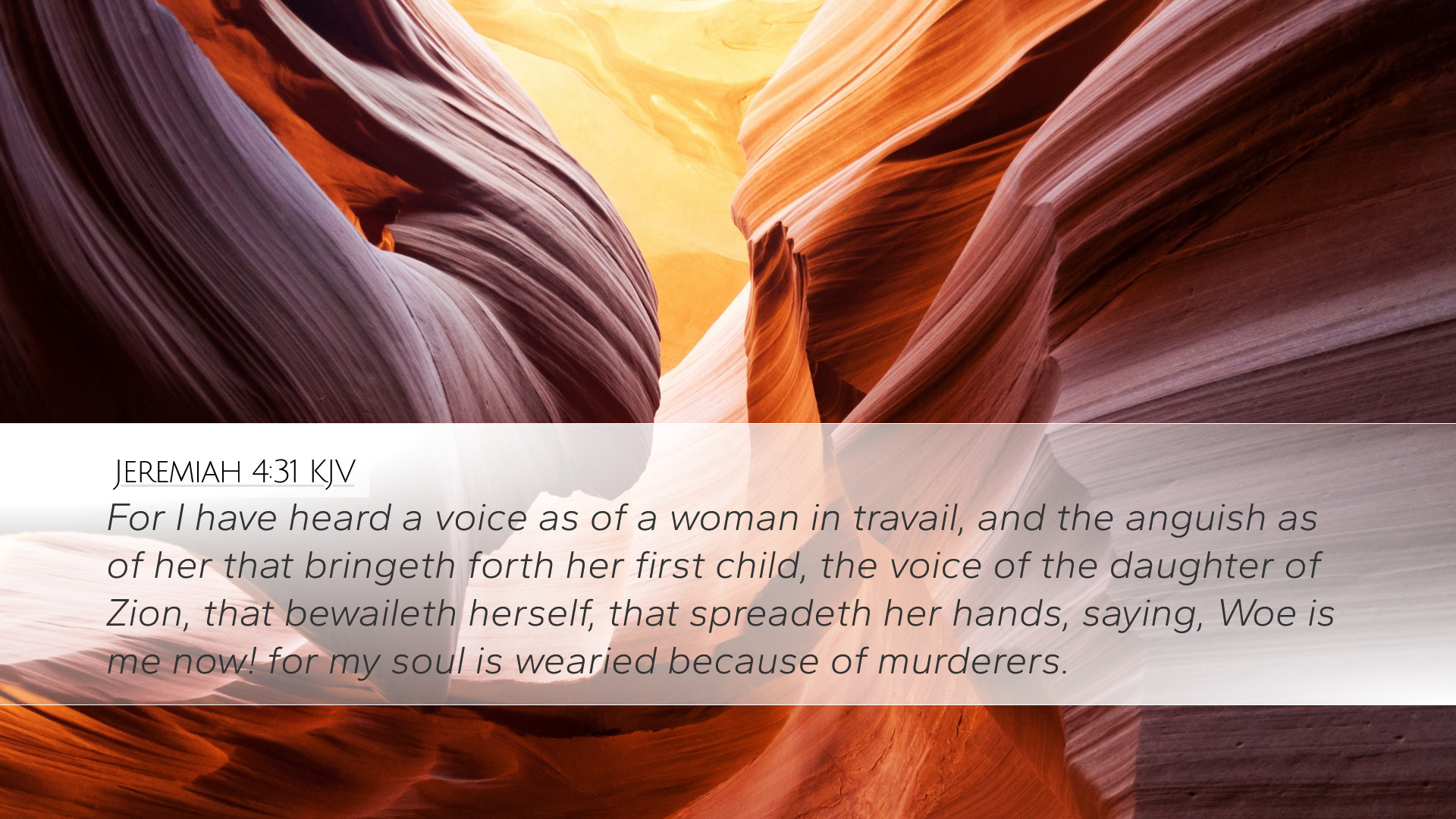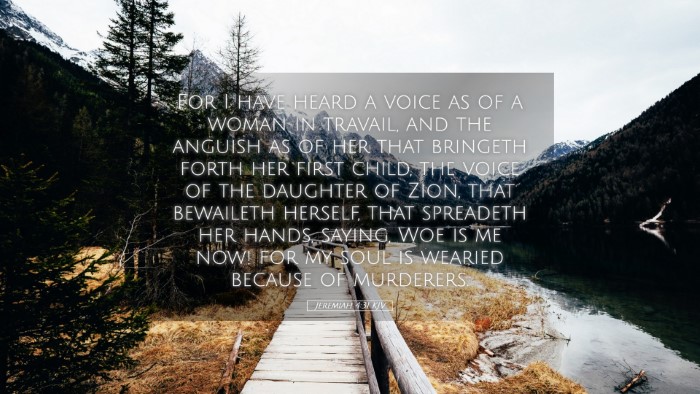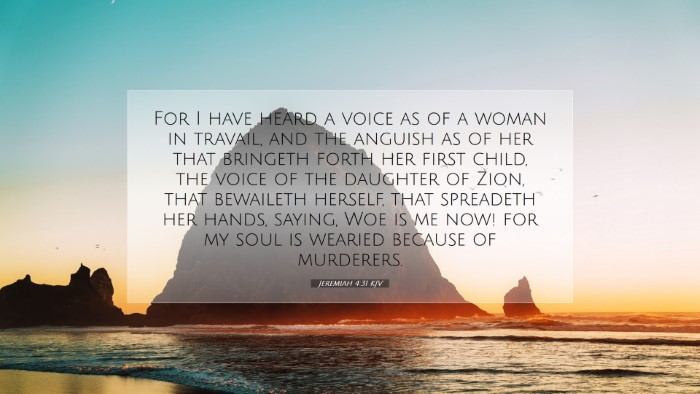Commentary on Jeremiah 4:31
Jeremiah 4:31 states: "For I have heard a voice as of a woman in travail, and the anguish as of her that bringeth forth her first child, the voice of the daughter of Zion, that bewaileth herself, that spreadeth her hands, saying, Woe is me now! for my soul is wearied because of murderers."
Contextual Overview
This verse is set within a larger context of prophecy concerning the impending calamity facing Judah. The Jeremiah of this chapter conveys the deep emotional and spiritual turmoil experienced by the nation due to its disobedience and impending judgment.
Exegesis and Interpretation
- Voice of a Woman in Travail: Both Matthew Henry and Adam Clarke emphasize the intensity and urgency of the lament expressed here. The metaphor of a woman in labor signifies not just physical pain, but also the deep emotional anguish associated with loss, particularly the potential loss of nationhood and identity.
- Symbolism of Childbirth: The anguish likened to childbirth reflects the nation’s suffering before a new birth; this can imply hope beyond despair or the necessity of suffering prior to transformation. As Henry notes, the pains of childbirth often lead to joy, suggesting that through this suffering, the possibility of restoration exists.
- Voice of the Daughter of Zion: The use of "daughter of Zion" refers to the people of Jerusalem, highlighting their collective suffering. Albert Barnes notes the personification of Zion here, representing the whole city as a mother in sorrow, thereby connecting her pain with the judgment that is about to fall upon her.
Theological Implications
This verse opens profound theological reflections concerning divine judgment, human despair, and the struggle of faith amidst crisis. The pregnant metaphor serves as a reminder of the cycles of judgement and restoration that define much of biblical theology.
- Divine Judgment: The cry of despair indicates the severe consequences of Israel's sin against God. Reflecting on Clarke's commentary, the judgment is not arbitrary but a result of the nation's persistent rebellion and idolatry.
- Hope in Suffering: Jeremiah's imagery does not merely present despair but suggests that out of anguish can come hope and renewal. This duality mirrors the Christian understanding of suffering leading to future glory, as articulated in Romans 8:18.
Pastoral Applications
For pastors, this verse provides a rich resource to engage with themes of suffering and hope. The mother's cry resonates with many congregants who may feel overwhelmed by life's circumstances. Here are a few pastoral reflections:
- Empathy with Suffering: A pastoral approach to suffering can be informed by this passage. Just as the anguish of Zion is depicted, pastors can offer their presence and understanding in times of emotional turmoil.
- Calling to Repentance: This passage serves as an urgent call to reflect on spiritual complacency within congregations. Like Judah, modern church communities must grapple with their own spiritual fidelity toward God.
- Holding to Hope: While acknowledging the depth of despair, pastors can also uplift their congregations by reminding them of the hope that emerges from suffering, encouraging a mindset that anticipates redemption and healing.
Conclusion
Jeremiah 4:31 encapsulates the profound anguish experienced by a people on the brink of calamity, resonating with the broader biblical narrative of judgment and redemption. By intertwining sorrow with the metaphor of childbirth, it offers a poignant reminder that suffering is part of the cycle of life, potentially leading to new beginnings. The insights gleaned from public domain commentaries illustrate that even amid despair, one can find paths toward hope, repentance, and restoration - core themes that remain ever relevant in the life of the church and its ministry today.


